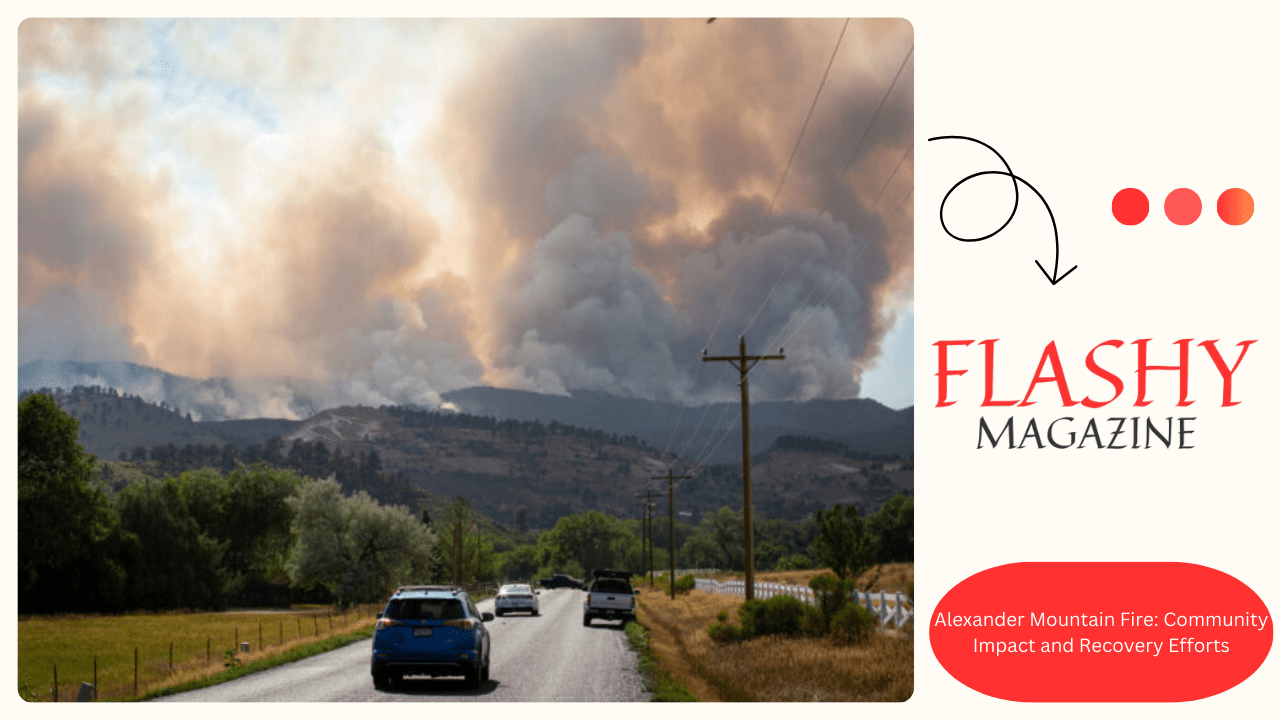The Alexander Mountain Fire is one of numerous backfires that have affected communities in recent times, illustrating the growing trouble of natural disasters caused by environmental change. Fires like the bone that destroyed Mount Alexander can have ruinous goods on both original ecosystems and mortal agreements. In this blog post, we explore what caused the Alexander Mountain fire, its impact on the community and terrain, exigency response, and ongoing recovery sweats.
What’s The Alexander Mountain Fire?
The Alexander Mountain Fire refers to a significant fire that broke out in a mountain region and redounded in expansive damage to the area. Like numerous backfires, this one spread snappily, fueled by dry conditions, strong winds and ignitable foliage. While fires can start from natural causes similar as lightning strikes, mortal conditioning similar as unattended conflagrations or electrical faults are also common lawbreakers.
The fire started during a particularly dry period when the foliage was largely susceptible to burning. Alexander Mountain’s rugged terrain and thick timbers presented fresh challenges to constraint sweats, so the fire spread unbounded in its early stages. The impact of the Alexander Mountain fire:
- Damage to The Terrain
One of the most immediate consequences of the Alexander Mountain fire was the destruction of the original terrain. The fire consumed large areas of timber, reducing natural territories for wildlife and affecting original biodiversity. Fires frequently leave scorched earth in their wake, which can lead to long- term changes in soil composition, water immersion and factory regrowth.
Wildlife in the region also suffered. numerous creatures were forced to flee, while others decomposed in the dears. The destruction of natural territories, food sources and water inventories has led to an ecological imbalance that can take times, if not decades, to restore.
- Air Quality and Health Problems
As with any large timber fire, the Alexander Mountain fire released a huge quantum of bank and particulates into the air, causing poor air quality not only in the immediate vicinity but also in girding areas. Bank from the fire spread to near municipalities and metropolises, leading to respiratory problems, especially for vulnerable populations similar as children, the senior and people with pre-existing conditions.
Bank inhalation can have serious health consequences, including worsening asthma, bronchitis and other respiratory conditions. Health warnings were issued in affected areas and residers were advised to stay outdoors or use masks to reduce exposure to dangerous air.
- Loss and Junking of Property
In addition to ecological damage, the Alexander Mountain fire also destroyed houses, granges and other parcels. numerous resides were forced to void, doubtful if they would return to find their homes still standing. The emotional risk of losing a home, along with particular things and recollections, added to the overall trauma of the event.
For those affected, the fate of the fire was a delicate road to recovery that included insurance claims, rebuilding sweats and emotional mending. The fire displaced numerous families, forcing them to seek temporary sanctum with musketeers, family or exigency services.
Exigency Response to The Alexander Mountain Fire
The response to the Alexander Mountain fire was quick but grueling . Firefighters, levies and exigency services snappily mustered to extinguish the blaze, but a combination of dry conditions and delicate terrain hampered sweats to contain the blaze.
- Firefighters and Exigency Services
Firefighters worked around the timepiece and used both ground crews and air support to extinguish the fire. copters and aero planes dropped water and fire retardant while ground crews cleared foliage to produce firebreaks to keep the dears from spreading.
Exigency response involved cooperation between original, state, and civil agencies. In addition, levy groups and original resides have joined sweats to cover homes, beast and other precious means. still, despite these sweats, the intensity of the fire meant that full closures took days to weeks.
- Evacuation and Harbors
As the fire hovered more populated areas, obligatory evacuations were blazoned. Evacuation centers were set up in near municipalities to offer temporary sanctum, food and coffers to displaced resides. These centers also handed medical backing to those affected by bank or those in need of other exigency services.
In some cases, resides refused to leave their homes in expedients of saving their effects from the dears. While accessible, these opinions put them at great threat and complicate deliverance and constraint sweats.
Reconstruction After the Alexander Mountain fire
Once the Alexander Mountain fire was completely contained, attention shifted to recovery and reconditioning. Campfire recovery involves a multifaceted approach that addresses ecological, infrastructural and emotional requirements.
- Afforestation and Environmental Restoration
One of the main precedence’s after the fire was the restoration of the original terrain. Afforestation sweats have been initiated to restore burned timber areas, with native factory species being greeted to the geography. This process will take times and requires careful planning to insure proper restoration of ecosystems.
The fire also made the region vulnerable to other natural disasters, similar as landslides and cataracts, due to the destruction of foliage that stabilizes the soil. sweats to alleviate these pitfalls continue, with brigades working on corrosion control and water operation.
- Reconstruction of Houses and Structure
For displaced resides, the main precedence is the reconstruction of houses and other structures. Insurance companies, government agencies and charities are working together to help those who have lost their homes start the reconditioning process.
Structure similar as roads, power lines and communication systems also needed significant form. Original governments have invested in strengthening structure to make them more flexible to unborn fires and other natural disasters.
- Community Support and Mending
Eventually, the emotional risk of the Alexander Mountain fire can not be overlooked. numerous resides endured the trauma of evacuation, loss of effects and query about the future. Comforting services, community support groups and internal health coffers have been made available to help individualities manage with the fate of the fire.
Conclusion
The Alexander Mountain Fire serves as a stark memorial of the growing threat of backfires in a changing climate. While the community has shown adaptability in the face of destruction, the road to recovery is long and delicate. Rebuilding homes, restoring the terrain and supporting those affected by the fire is an ongoing trouble that requires the cooperation of all parties involved.
Looking ahead, it’s important to invest in timber fire forestallment, ameliorate exigency response systems and support recovery sweats to alleviate the ruinous impact of unborn fires. Assignments from the Alexander Mountain Fire can help communities prepare for and respond to backfires, making them more flexible to these decreasingly common natural disasters.








